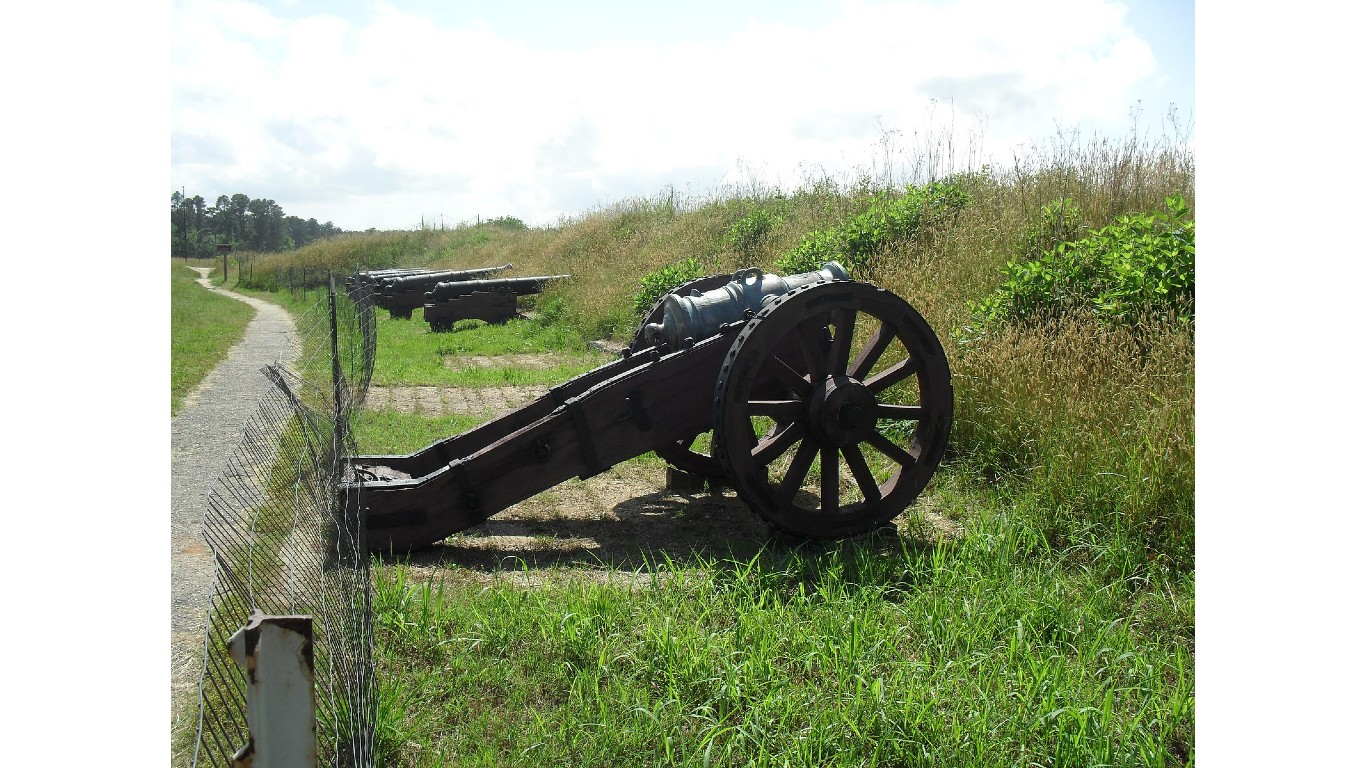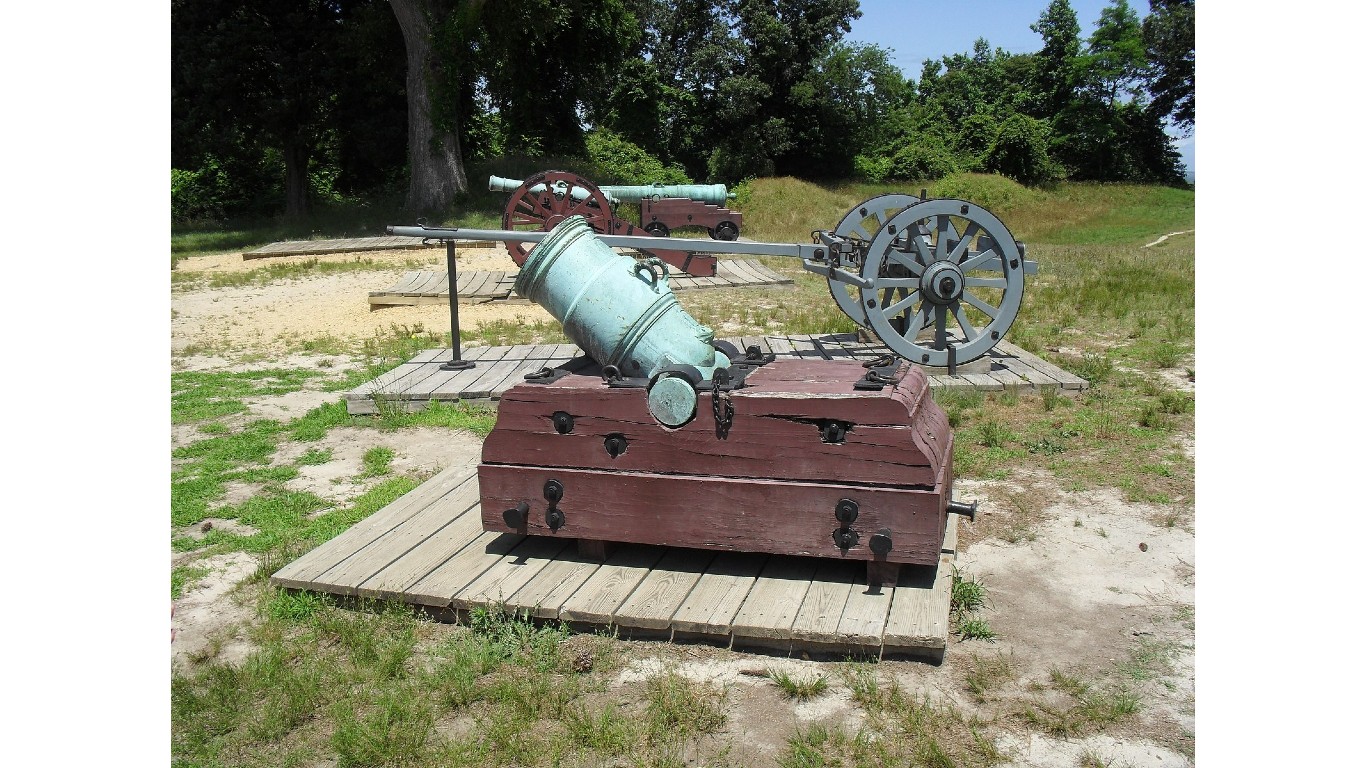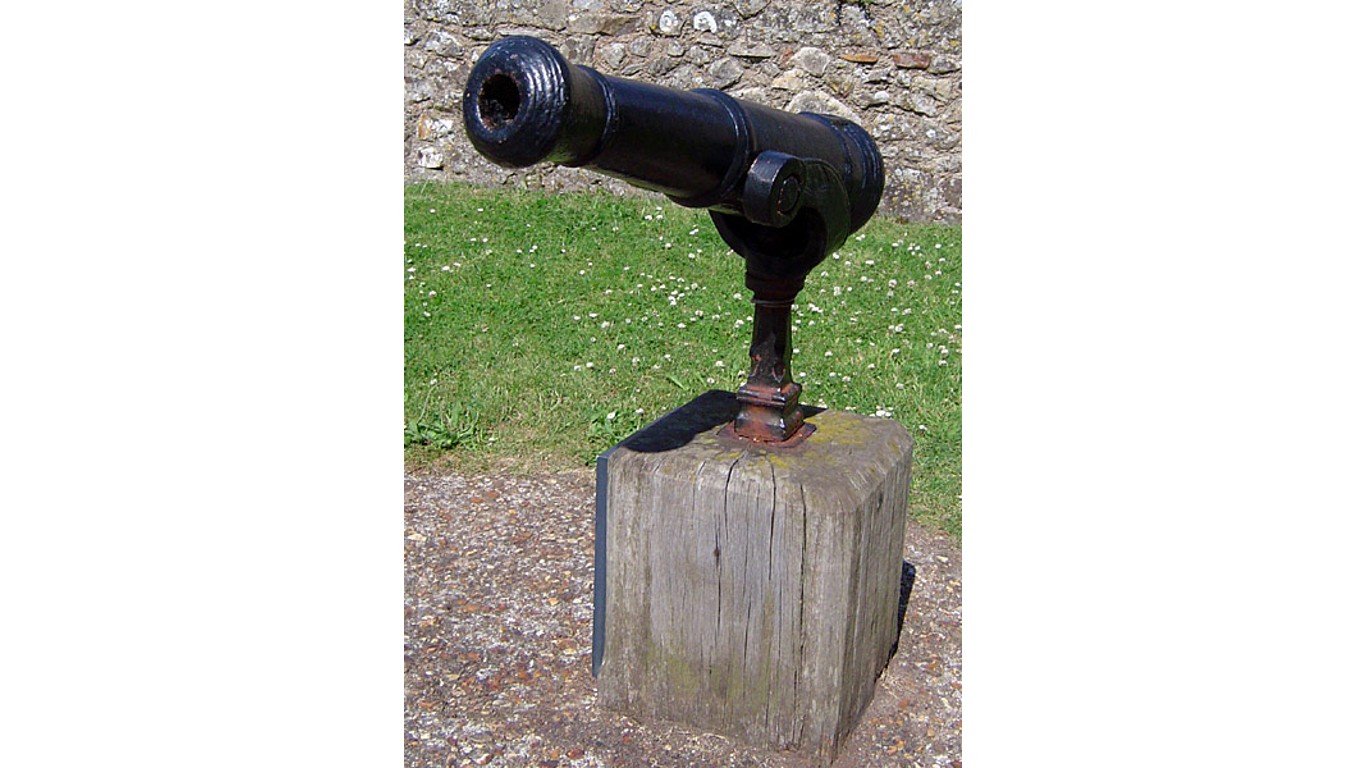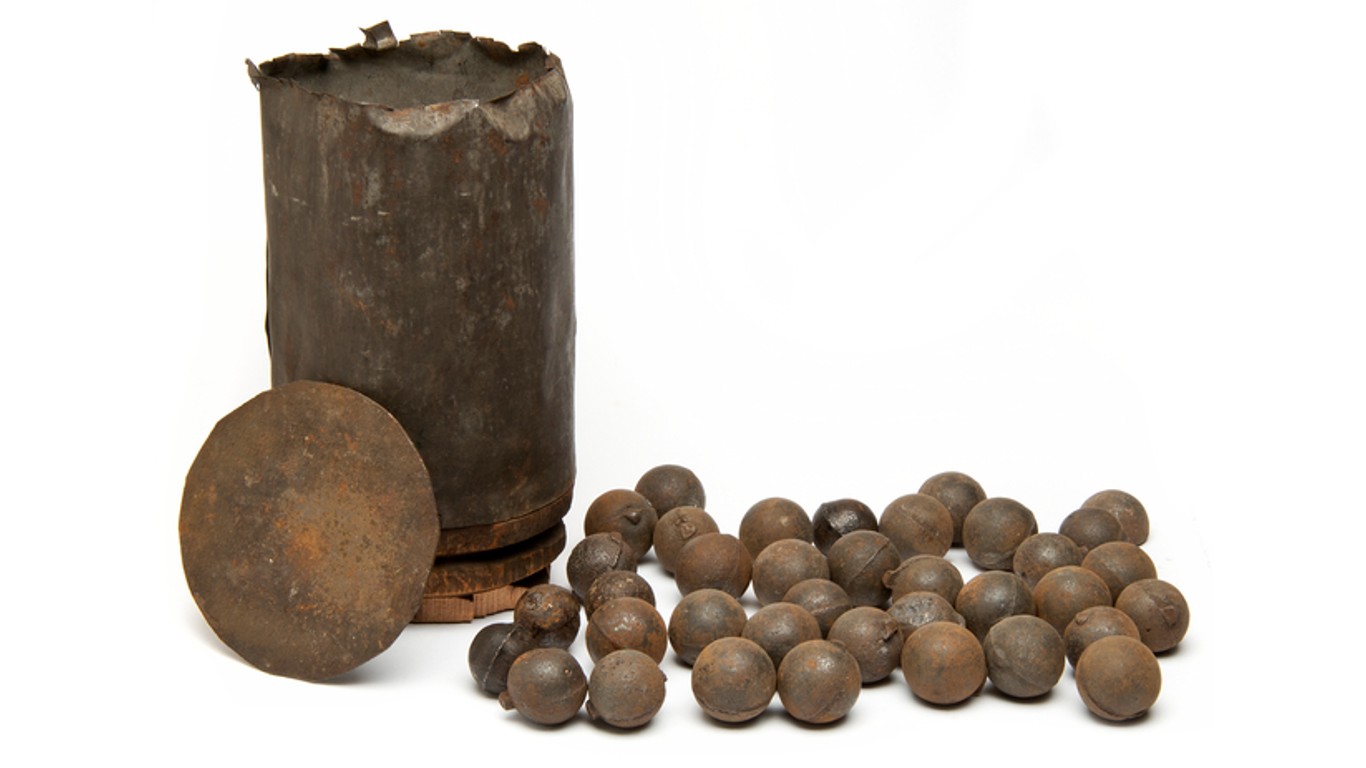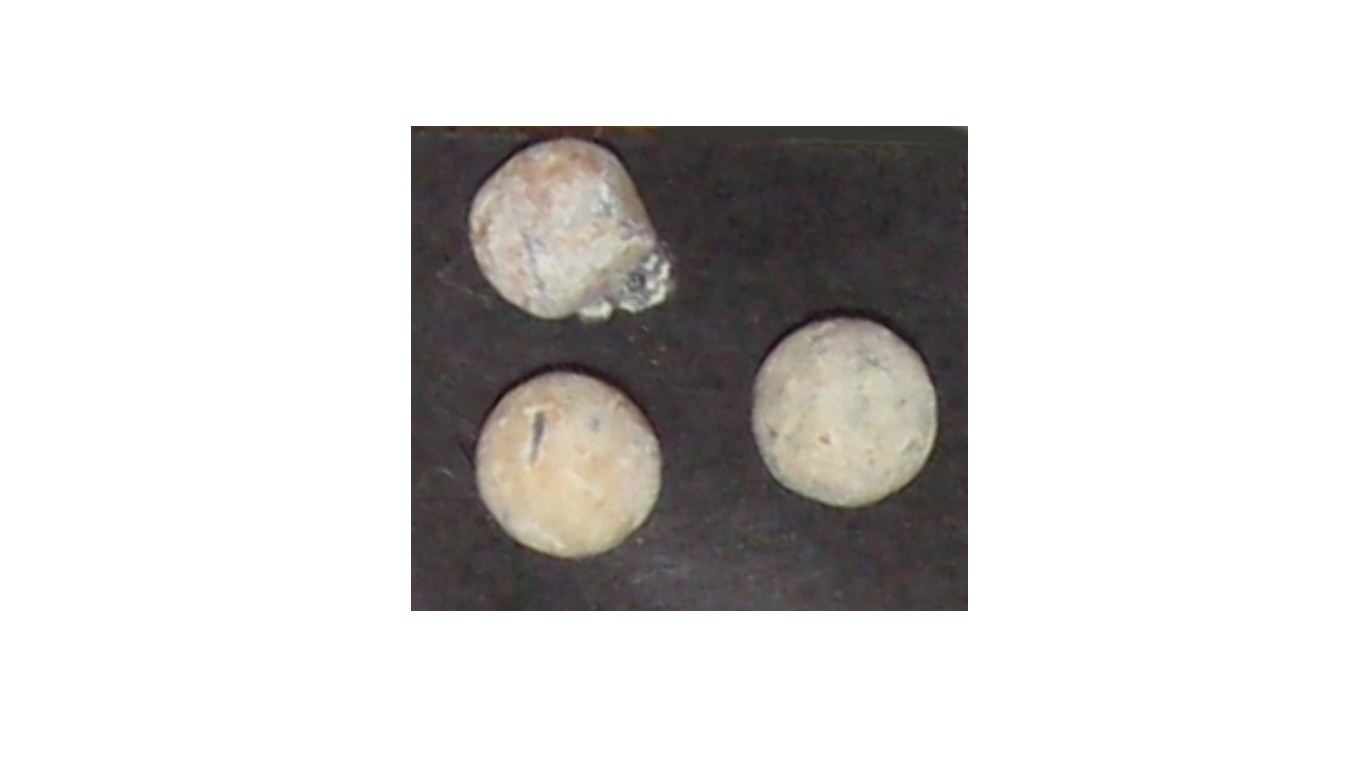
The American Revolutionary War pitted colonial rebels against the mighty British Empire in a struggle for freedom and independence. Amidst the clash of ideologies and the quest for sovereignty, different deadly weapons emerged, reshaping the nature of warfare on American soil.
From the thunderous cannons that shattered fortifications to the razor-sharp bayonets that led charges into enemy lines, these instruments of destruction left an indelible mark on the course of history.
To compile a list of some of key and most common weapons used in the American Revolutionary War – on both sides – 24/7 Tempo reviewed several sites about the history of the war, including the American Battlefield Trust and the American Revolution Institute, and educational site Sutori.
In every war, technological advancements and strategic innovations help define the era of warfare. The Revolutionary War was no exception. Both sides used artillery pieces, capable of launching devastating projectiles over vast distances. Colonial militias favored several types of long rifles for their unparalleled accuracy. (These are the 14 guns that helped fight the Revolutionary War.)
There was also innovative weaponry that emerged during the conflict. Weapons such as the game-changing Ferguson rifle with its swift reloading capabilities and the devastating carronades that wreaked havoc in naval battles pushed the boundaries of warfare and forever reshaped the theater of combat. (Here is every standard issue U.S. military rifle since the American Revolution.)
Click here to see iconic weapons of revolutionary war
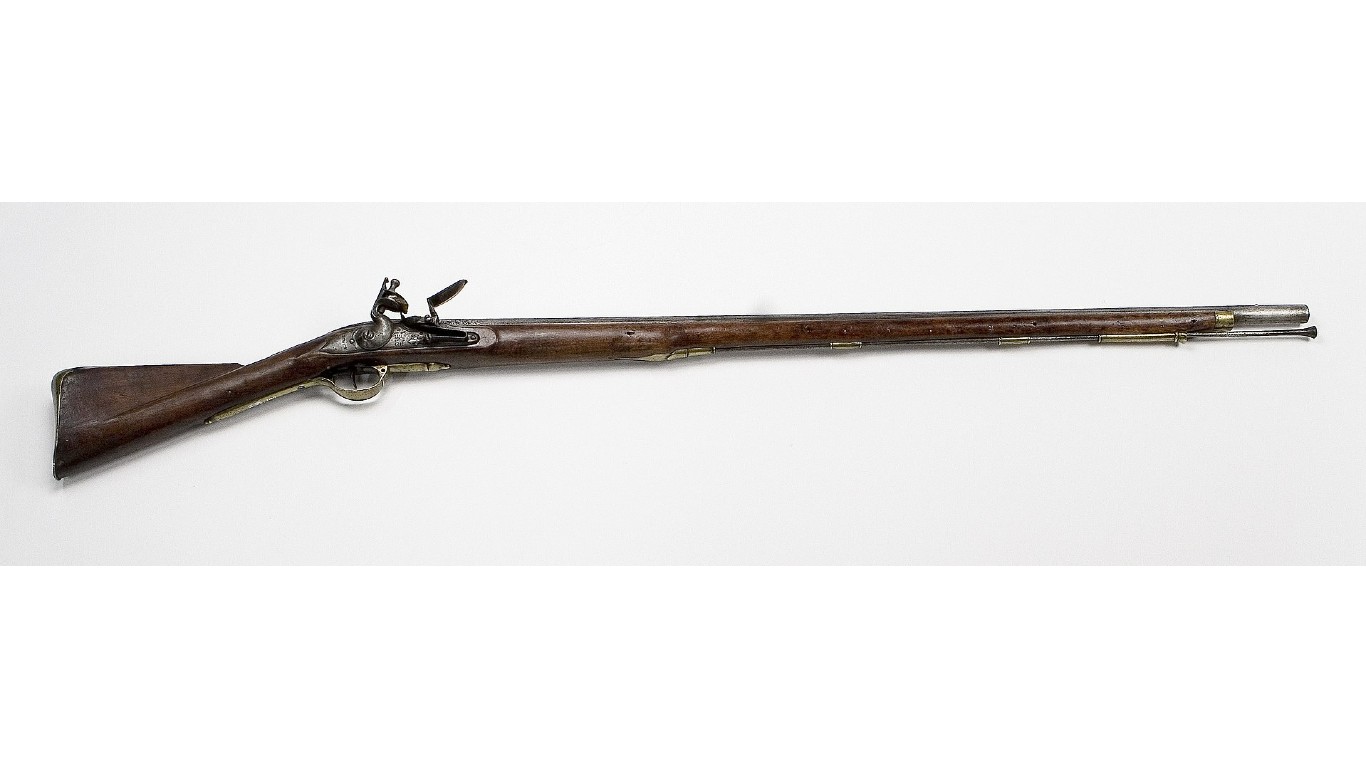
Brown Bess Short Land Pattern musket
The Brown Bess Short Land Pattern musket played a pivotal role during the American Revolutionary War. With a smoothbore barrel and flintlock mechanism, it became the standard firearm for both British redcoats and American militia. Its reliability, simplicity, and effectiveness in massed volleys made it a formidable weapon on the battlefield. The musket’s range and firepower influenced tactics.
[in-text-ad]
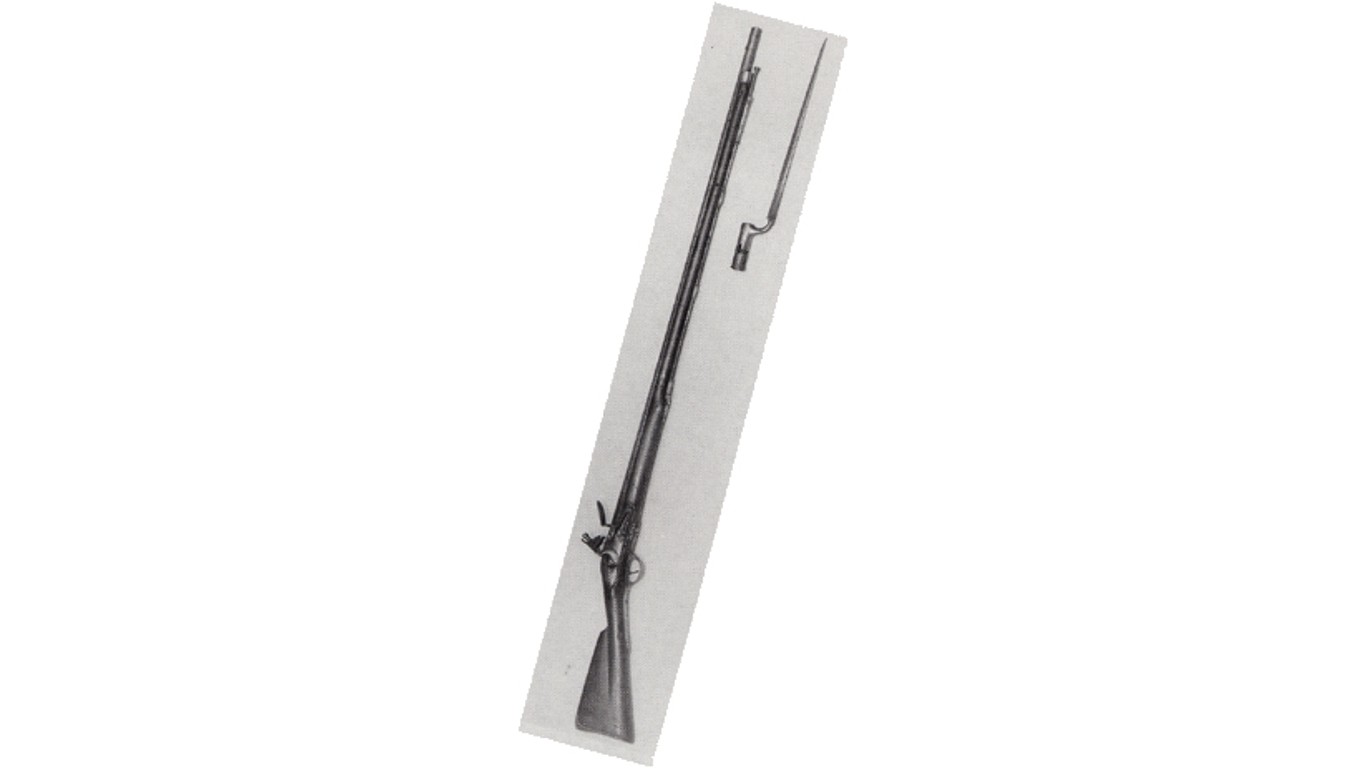
Brown Bess Long Land Pattern musket
The Brown Bess Long Land Pattern musket was a smoothbore flintlock musket with a caliber of .75 inches. The musket was approximately 62 inches long and weighed around 10 pounds. It had a bayonet lug at the muzzle, allowing soldiers to attach a bayonet for close combat. The Long Land Pattern musket was reliable and had a range of about 100 yards, making it a standard infantry weapon for both British redcoats and American militias.

Charleville musket
The Charleville musket was a widely used firearm during the American Revolutionary War. It was a flintlock musket with a .69 caliber and had a length of approximately 60 inches. Manufactured in France, the Charleville musket featured a curved stock made of walnut and a brass butt plate. It weighed around 10 pounds and had a range of about 100 to 200 yards. The musket had a bayonet lug, enhancing its versatility in close combat. The Charleville musket was favored by the Continental Army.
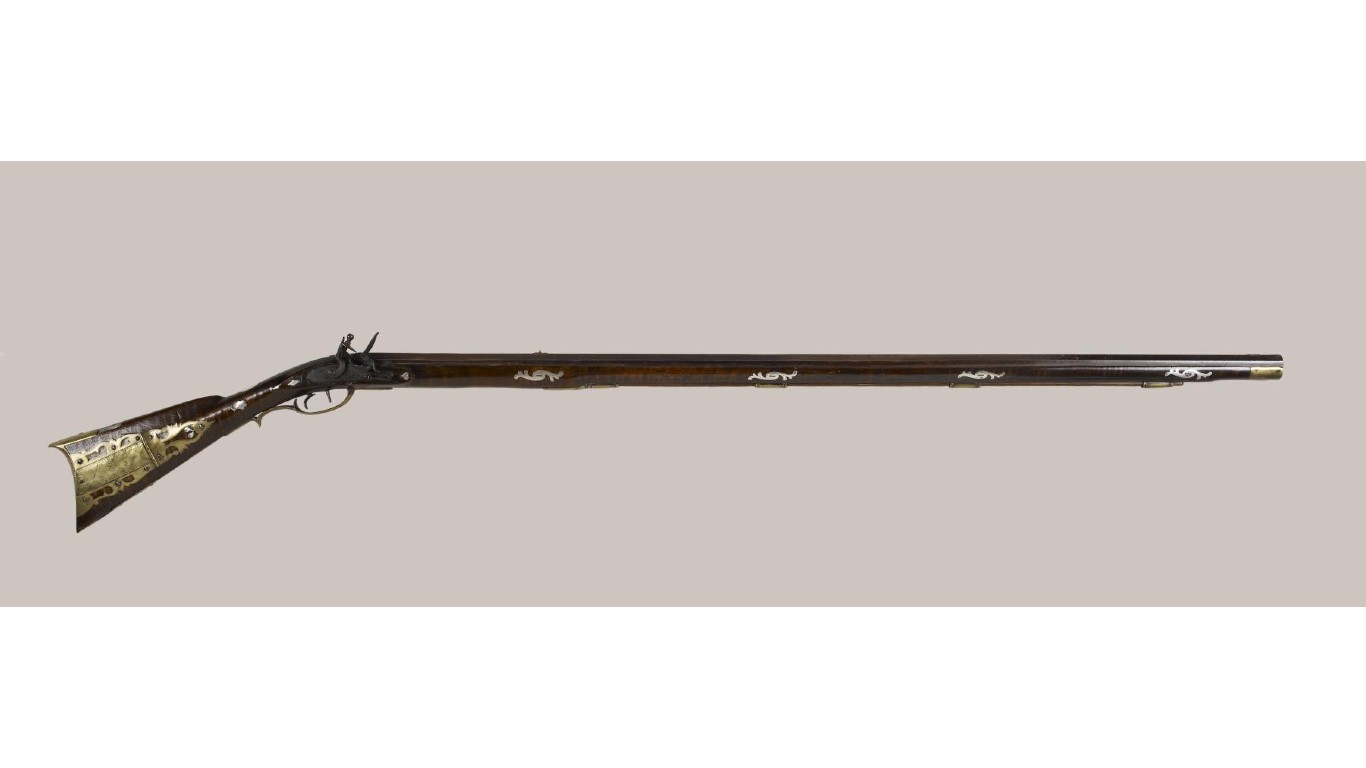
Long rifle
The Long Rifle, also known as the Kentucky Rifle, was a flintlock rifle with a longer barrel compared to the muskets of the time, measuring around 40-48 inches. The Long Rifle had a smaller caliber, typically .40 to .50 inches, and featured spiral rifling inside the barrel. It was renowned for its accuracy at long distances, reaching up to 300 yards. While not as commonly issued to regular troops, the Long Rifle was favored by American frontiersmen and sharpshooters.
[in-text-ad-2]
Pattern 1776 infantry rifle
The British introduced their own version of the Whig snipers rifle — the 1776 pattern rifle. The design of the rifle was originally Hanoverian and was based on the typical German military rifles commonly used by German auxiliaries like the Hessian jaegers, who fought alongside the British during that period.
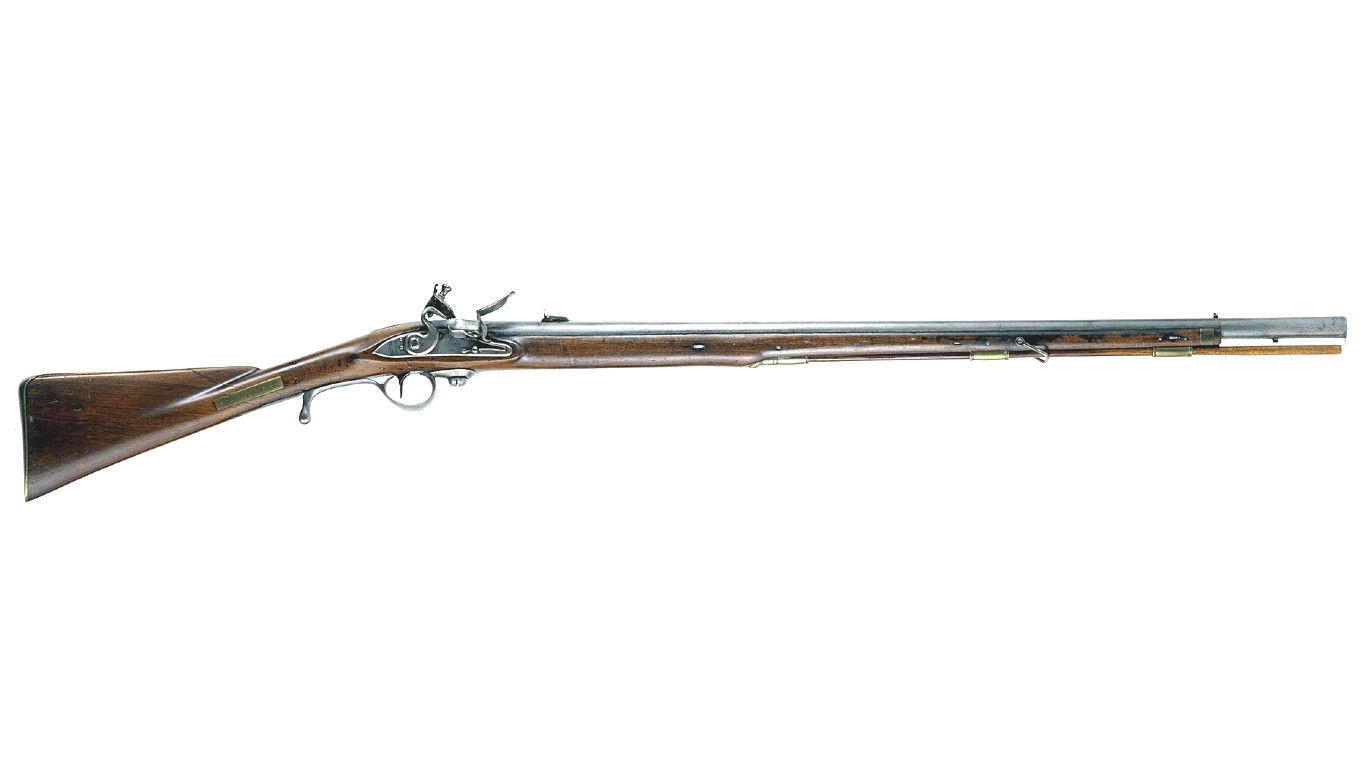
Ferguson rifle
Invented by British army officer Patrick Ferguson, the breech-loading rifle featured a unique screw breech mechanism, allowing for quick reloading compared to the muzzle-loading muskets of the time. With around a .65 caliber the rifle had a range of approximately 200 yards. It was renowned for its accuracy and firing speed. However, due to the limited production and high cost, only a small number of Ferguson rifles were used in the war, primarily by British forces.
[in-text-ad]
Kentucky flintlock pistol
Inspired by the design of the Kentucky Long Rifle, this pistol featured a flintlock mechanism for ignition. It had a single-shot capacity and was commonly used as a personal defense weapon or in close-quarters combat. The Kentucky flintlock pistol typically had a caliber of around .45 to .54 inches and a barrel length of about 8-10 inches. It was prized for its reliability and accuracy at short ranges.
Light Dragoon pistol
The Light Dragoon pistol was a prominent firearm used by light cavalry units during the American Revolutionary War. It was a flintlock pistol with a single-shot capacity, designed specifically for mounted troops. The pistol featured a smoothbore barrel, typically around 9 to 11 inches in length, and it had a caliber ranging from .57 to .62 inches. The Light Dragoon pistol was known for its compact size, allowing for easy handling while on horseback.
Modele 1763 pistol
The Modele 1763 flintlock pistol originated in France and was commonly employed by French troops during the conflict. The pistol had a single-shot capacity and featured a smoothbore barrel with a caliber of approximately .69 inches. The Modele 1763 pistol was renowned for its reliability and effectiveness in close-quarters combat. It had a compact design, typically with a barrel length of around 8 inches, making it suitable for use by infantry officers and cavalry alike.
[in-text-ad-2]
Field cannon
The Field cannon was a crucial artillery piece. It was a large, mobile artillery weapon that played a significant role in battles and sieges. Field cannons varied in size and type, but they generally consisted of a smoothbore barrel mounted on a carriage with wheels, allowing for mobility on the battlefield. They were often made of iron or bronze and fired cannonballs or explosive shells. Field cannons were used to breach fortifications, disrupt enemy formations, and provide support to infantry and cavalry units.
Mortar
The mortar was a specialized piece of artillery designed for firing explosive shells at high angles, primarily targeting fortified positions or enemy troops behind cover. Mortars typically consisted of a short, wide barrel mounted on a base or platform. They were often made of iron or bronze and fired explosive shells. Mortars provided an effective means of indirect fire, capable of inflicting significant damage.
[in-text-ad]

Carronade
The carronade was a significant naval artillery piece used during the American Revolutionary War. It was a short-barreled cannon known for its large bore size and relatively low muzzle velocity. Carronades were typically made of cast iron and mounted on naval vessels, particularly on the broadside decks. Carronades were advantageous in naval battles due to their ability to cause significant damage to enemy ships’ hulls and rigging. Their effectiveness in ship-to-ship combat made them a formidable weapon.
Swivel gun
The swivel gun was a small but versatile artillery weapon. It was a compact cannon designed to be mounted on swivels, allowing for easy rotation and aiming. Swivel guns were used on various types of vessels, including ships, forts, and even smaller boats. These guns were particularly effective in close-quarters engagements.
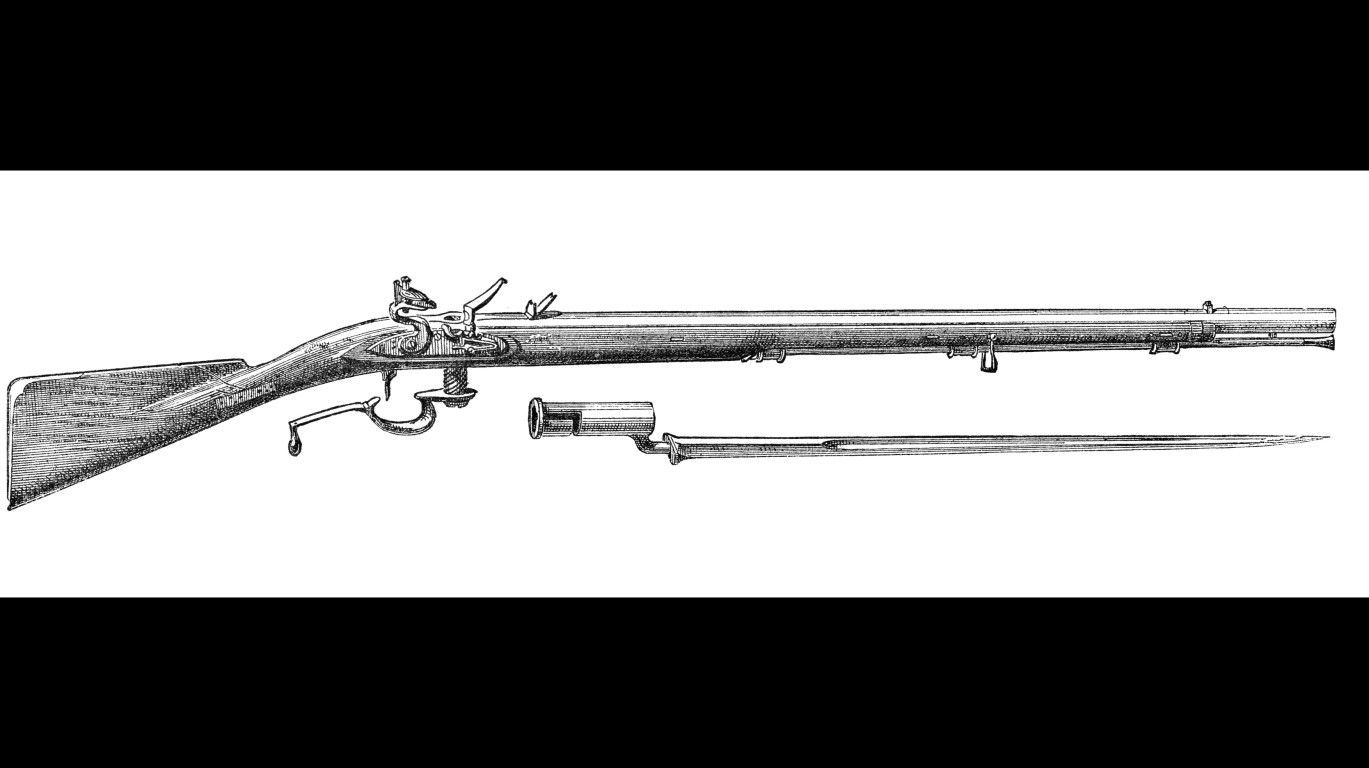
Bayonet
The bayonet was a blade attachment designed to be affixed to the muzzle end of a musket or rifle, transforming the firearm into a thrusting weapon for close combat. Bayonets typically had a triangular or spear-like blade. They were made of steel and played a crucial role on the battlefield, allowing infantry soldiers to switch from shooting at a distance to engaging in hand-to-hand combat when necessary. In a bayonet charge, soldiers would fix the bayonets to their muskets or rifles and break through enemy lines.
[in-text-ad-2]

Spontoon
The spontoon was a specialized polearm weapon. It was a long, spear-like weapon with a blade at one end and a counterbalancing spike or point at the other. The spontoon was typically around 6 to 7 feet in length, making it longer than a standard bayonet. The spontoon served as a symbol of rank and authority, often carried by officers to command and direct troops on the battlefield. The spontoon was more commonly used for signaling and giving orders during combat.
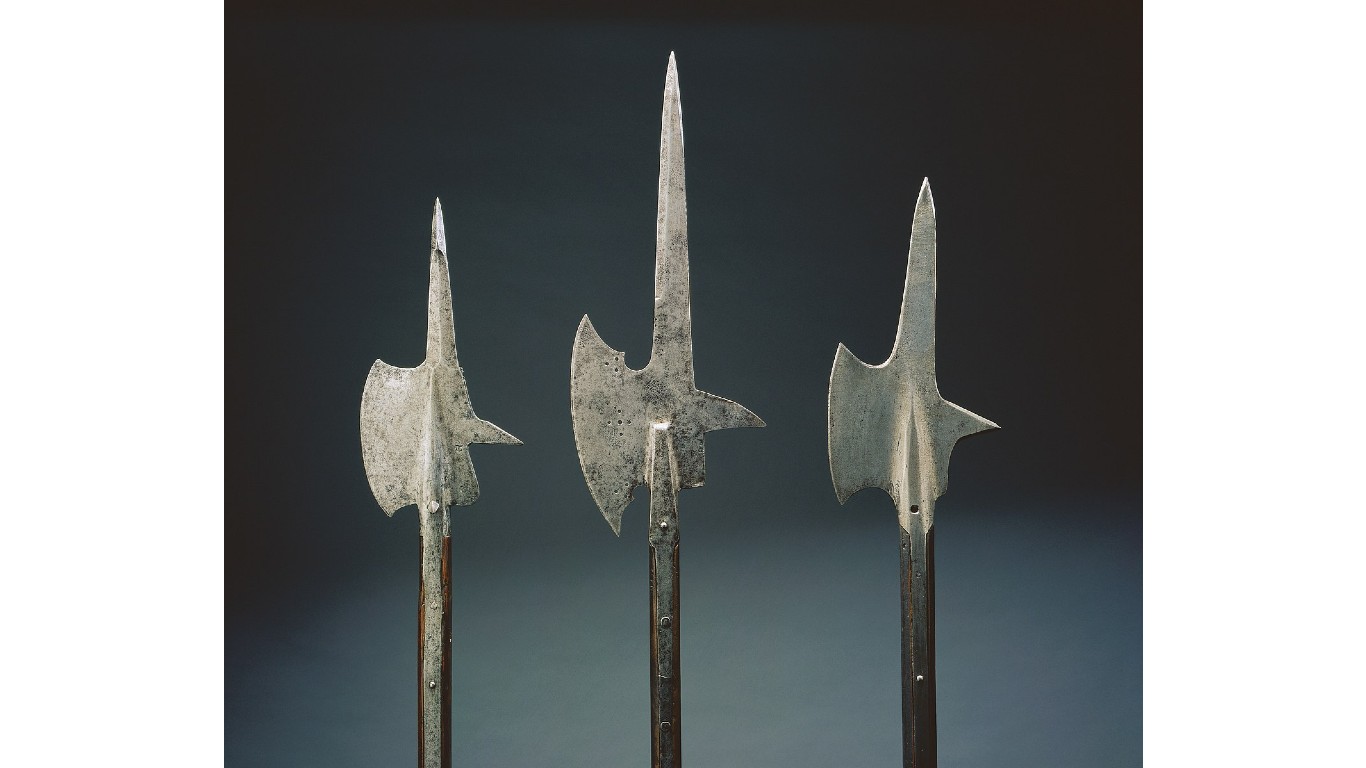
Halberd
The halberd was a formidable polearm weapon that consisted of a long shaft, usually around 6 to 8 feet in length, topped with a combination of an ax blade, a spear point, and often a hook or a spike. The halberd offered a versatile and lethal combination of cutting, stabbing, and grappling capabilities. It was primarily used by grenadiers or guards.
[in-text-ad]
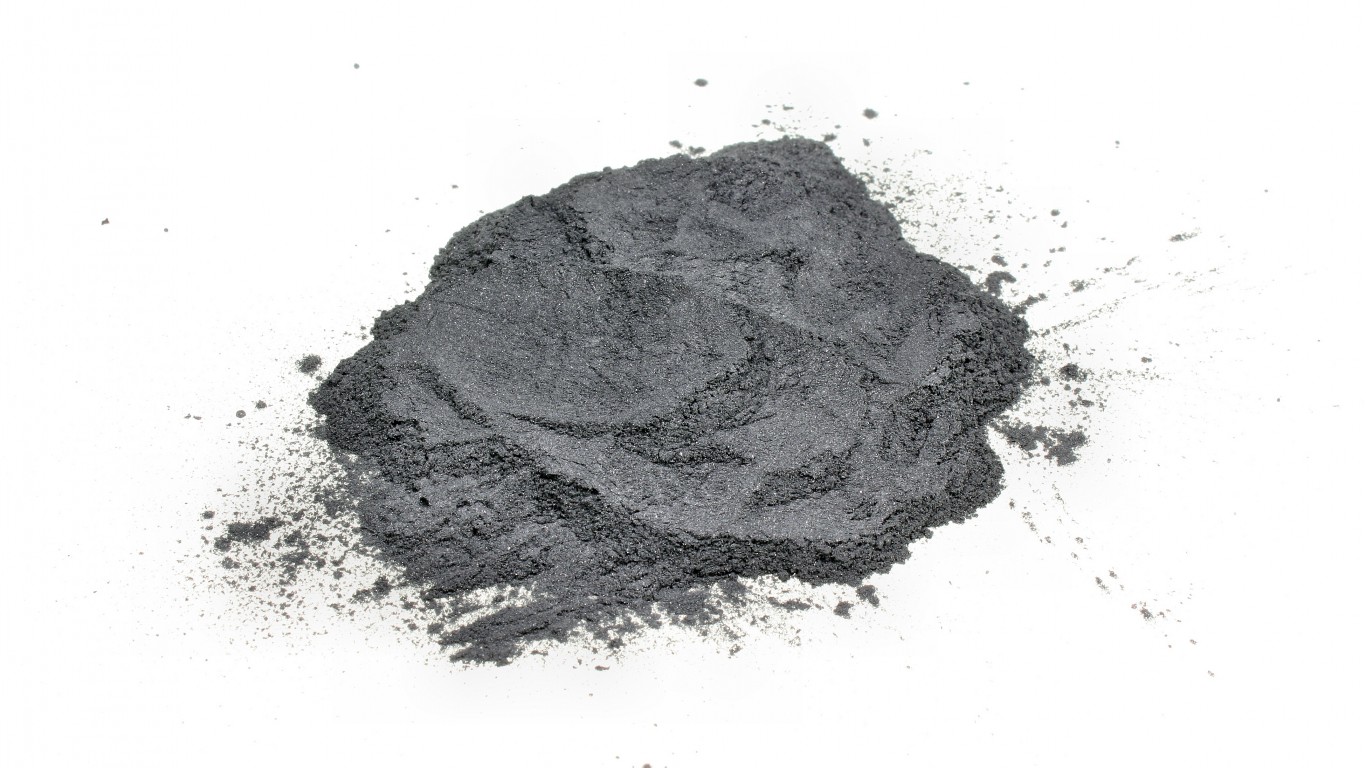
Shells-hollow projectiles filled with gunpowder
These explosive devices were designed to be fired from cannons or mortars and were effective in inflicting damage on enemy fortifications and troops. These shells typically had a hollow body with a fuse that could be ignited before firing. When the shell reached its target, the fuse would ignite the gunpowder inside, causing an explosion and scattering lethal fragments in all directions.
Canisters-metal projectile filled with multiple smaller balls
These canisters consisted of a metal container, usually cylindrical in shape, filled with multiple smaller balls, such as musket balls or lead pellets. The canisters were designed to be fired from cannons at short range. When the cannon was fired, the canister would break open, releasing the smaller balls in a cone-shaped pattern, akin to a shotgun blast. This created a deadly and wide-reaching hail of projectiles, capable of inflicting significant casualties on tightly packed enemy troops.
Lead balls for guns
Lead balls, also known as musket balls or bullets, were the standard projectiles used in firearms during the American Revolutionary War. They were made of lead due to its density, malleability, and availability. Lead balls played a vital role in the war, being the primary ammunition used by both colonial and British forces.
[in-text-ad-2]
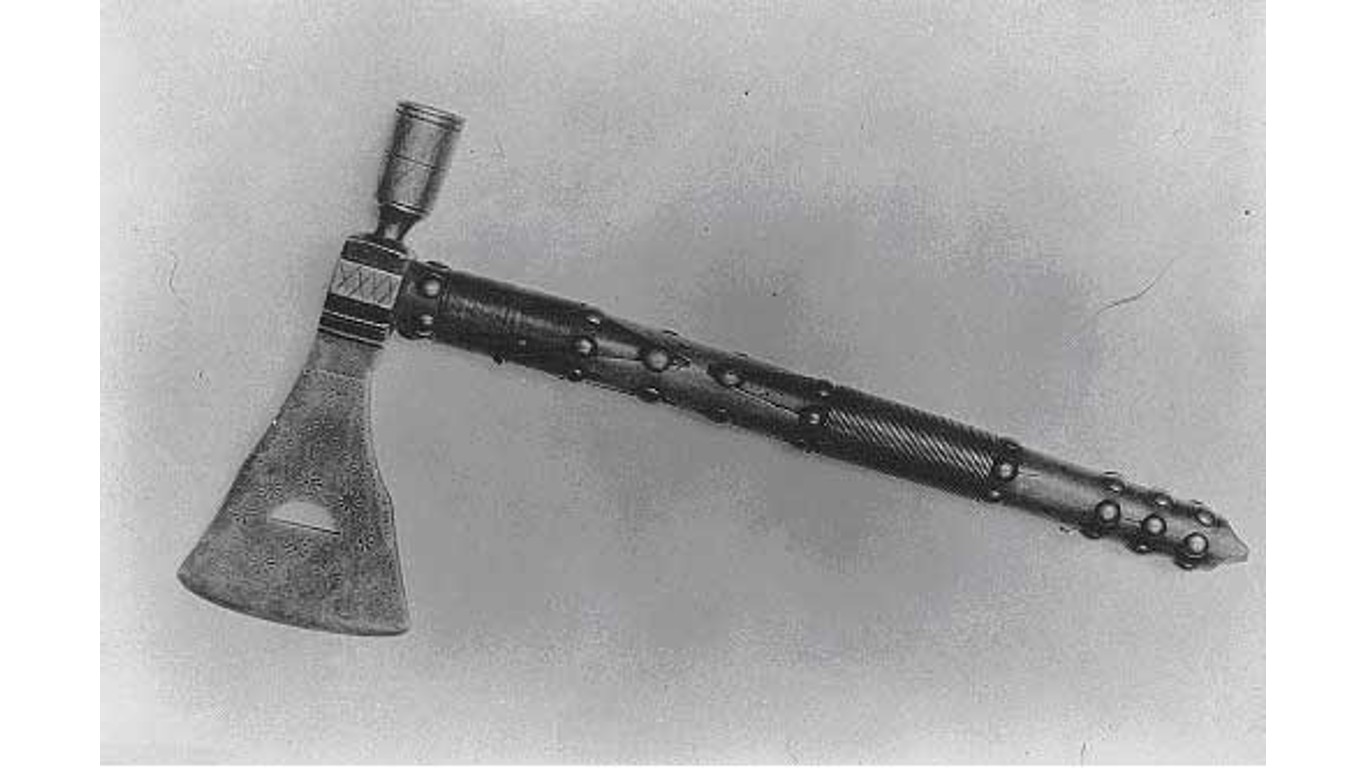
Tomahawk
The tomahawk was a versatile hand weapon. It was a small ax-like tool that originated from Native American cultures but became widely adopted by European colonists and soldiers during the conflict. It was used as a close-combat weapon for hand-to-hand fighting. The tomahawk offered a portable and effective weapon for skirmishing and ambushes.
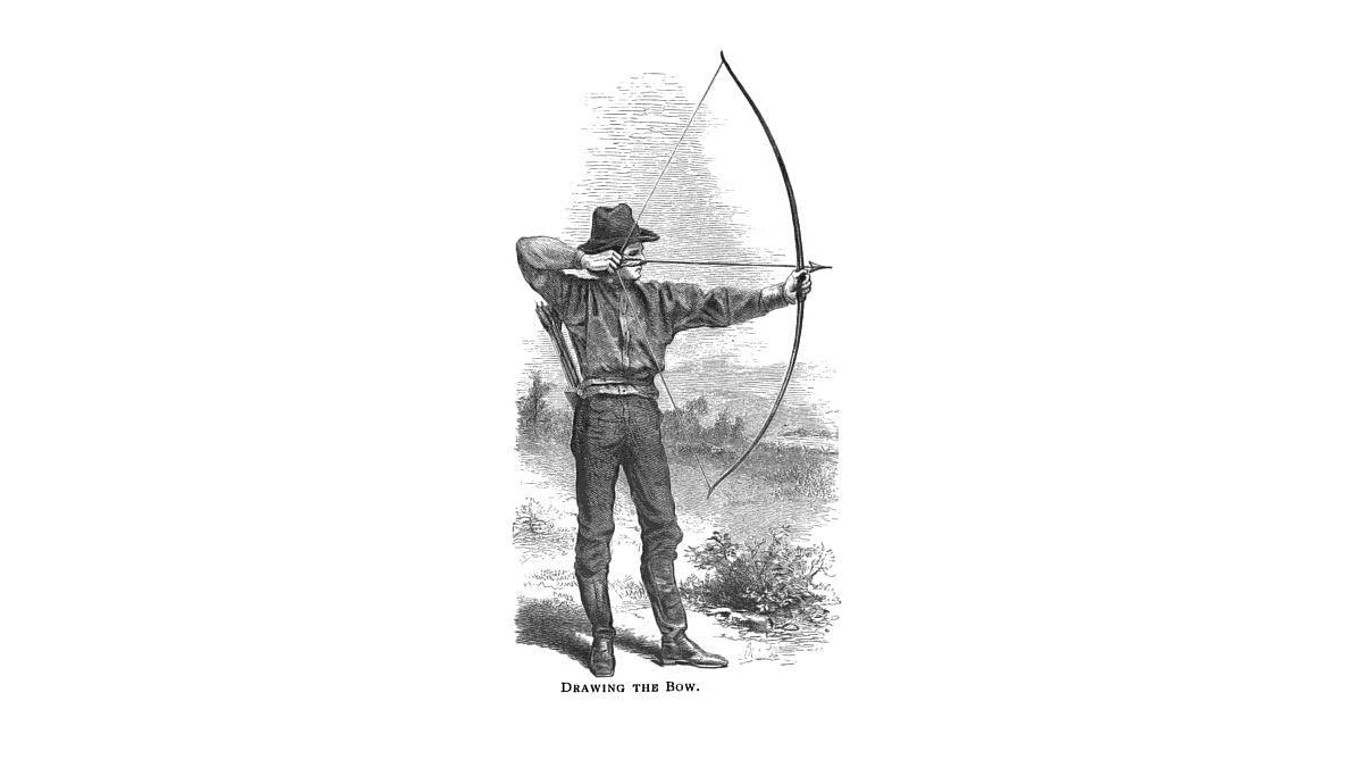
Bow and arrow
Though firearms dominated the war, the bow and arrow continued to serve as a dependable weapon. They offered several advantages on the battlefield, such as their silent nature, which provided a stealthy alternative to firearms, allowing for surprise attacks. The arrows, tipped with pointed heads, were capable of penetrating enemy defenses and inflicting lethal wounds.
100 Million Americans Are Missing This Crucial Retirement Tool
The thought of burdening your family with a financial disaster is most Americans’ nightmare. However, recent studies show that over 100 million Americans still don’t have proper life insurance in the event they pass away.
Life insurance can bring peace of mind – ensuring your loved ones are safeguarded against unforeseen expenses and debts. With premiums often lower than expected and a variety of plans tailored to different life stages and health conditions, securing a policy is more accessible than ever.
A quick, no-obligation quote can provide valuable insight into what’s available and what might best suit your family’s needs. Life insurance is a simple step you can take today to help secure peace of mind for your loved ones tomorrow.
Click here to learn how to get a quote in just a few minutes.
Thank you for reading! Have some feedback for us?
Contact the 24/7 Wall St. editorial team.
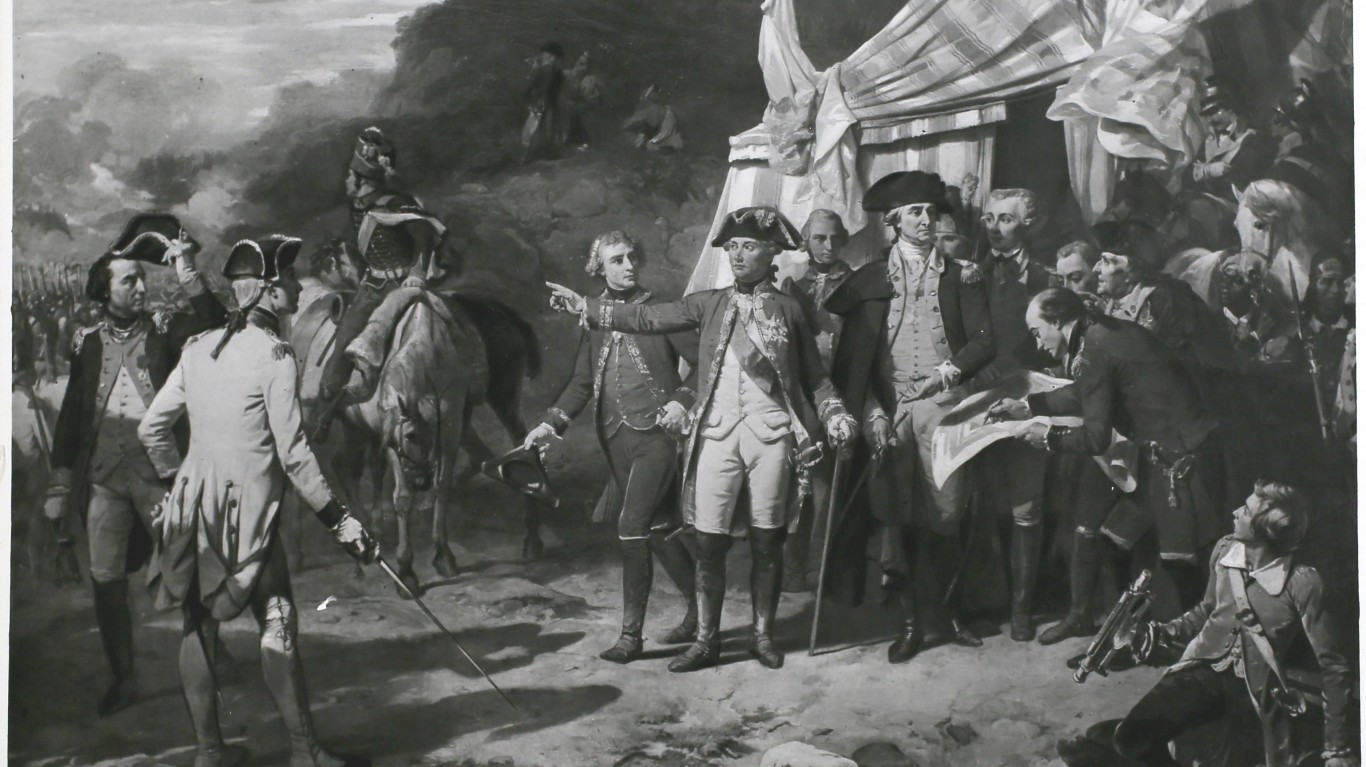 24/7 Wall St.
24/7 Wall St.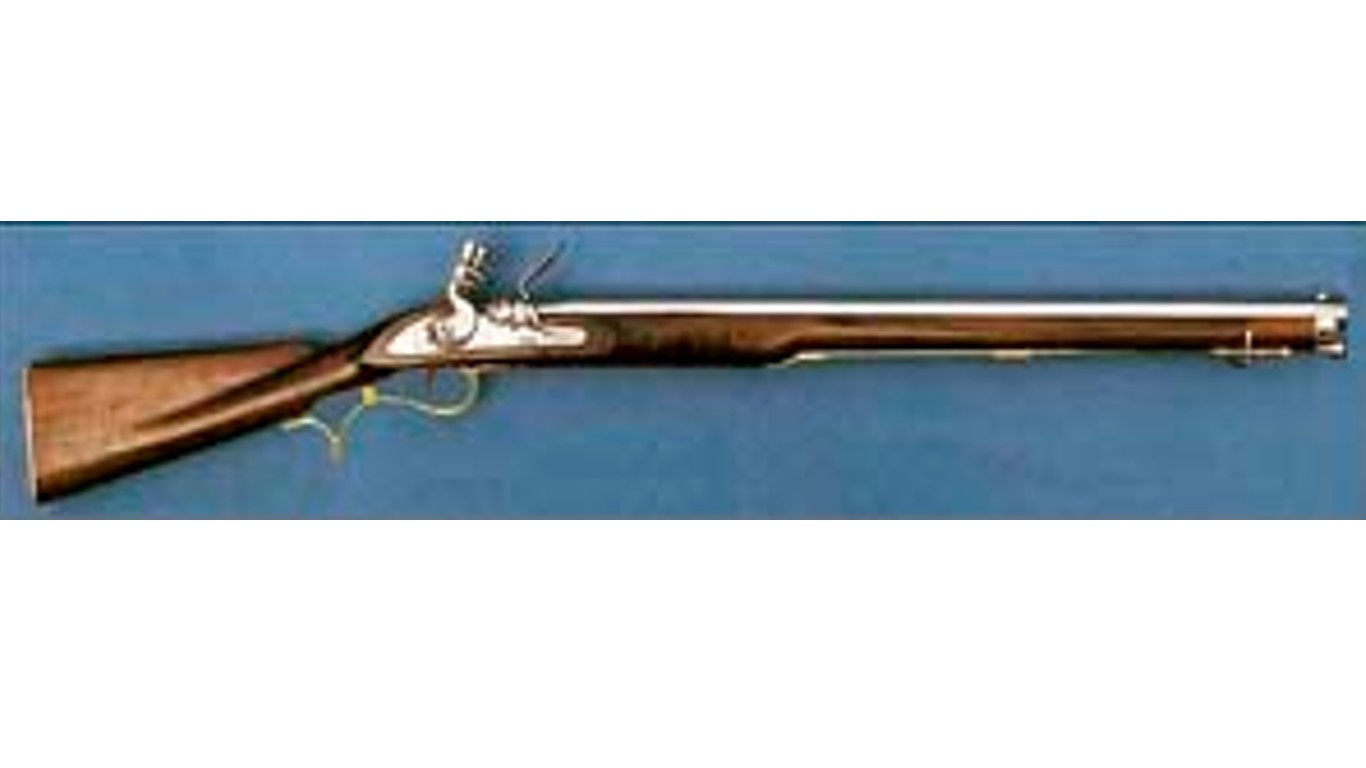
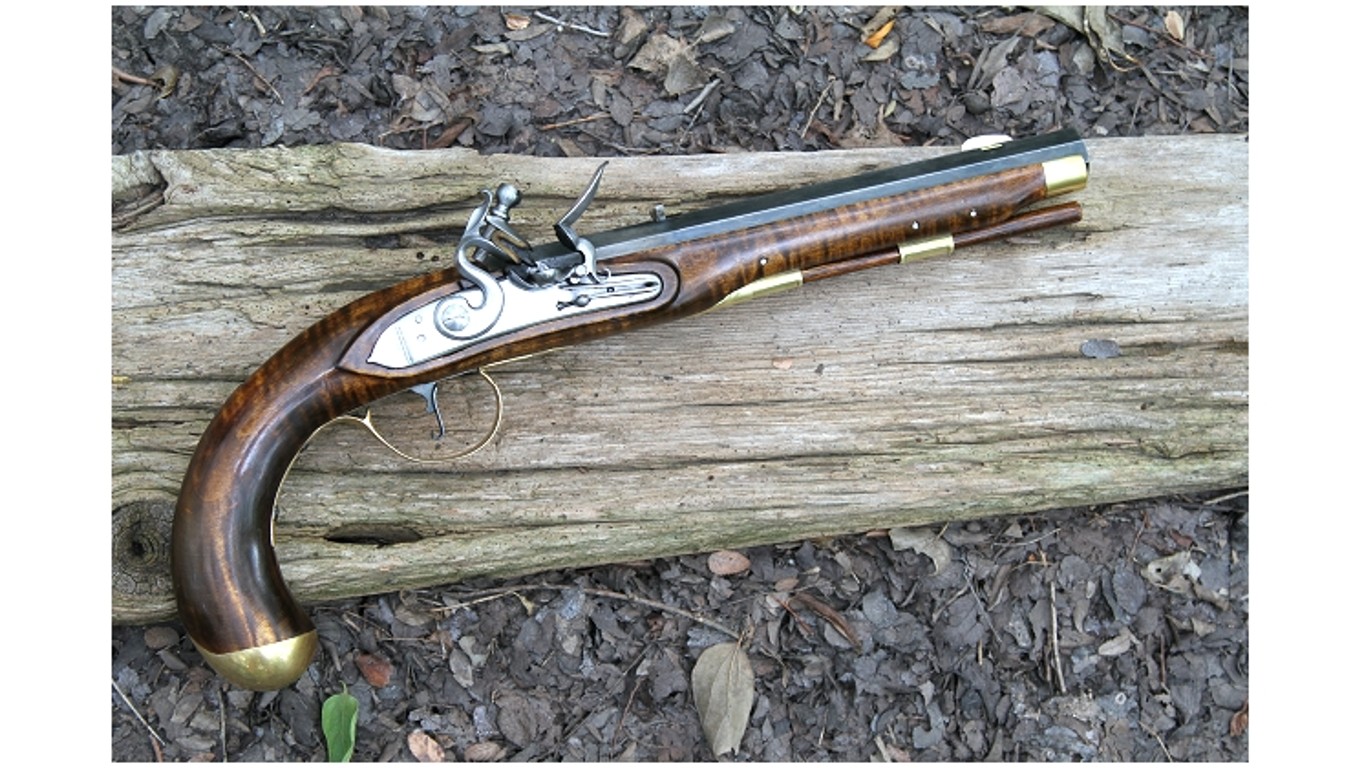
 24/7 Wall St.
24/7 Wall St.

